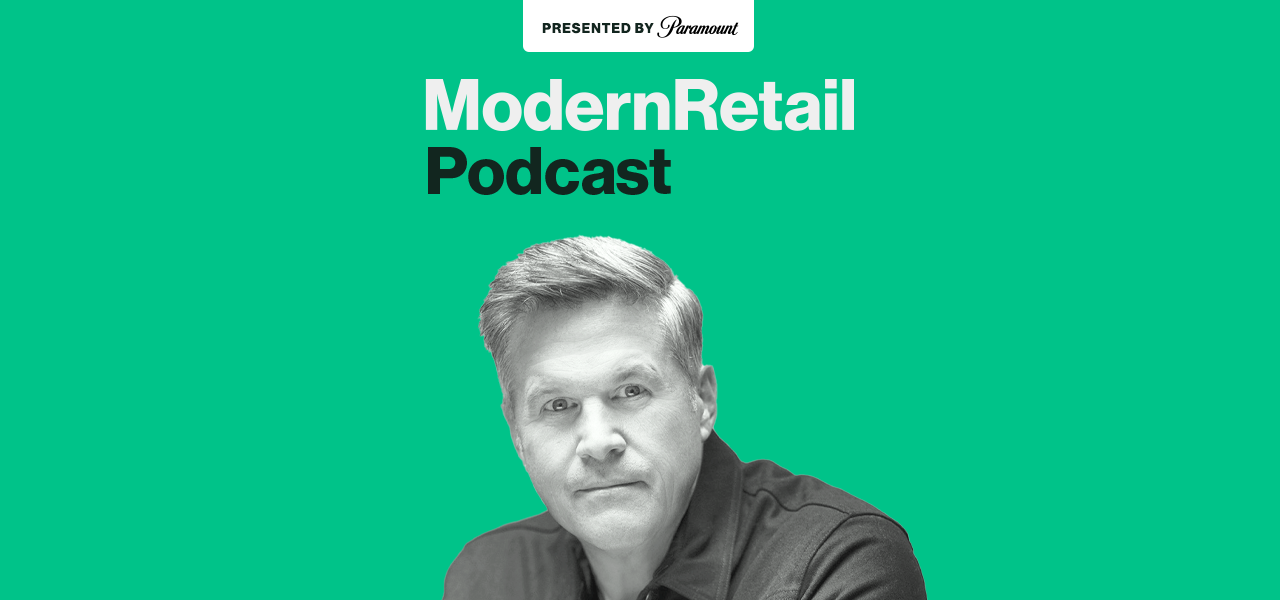‘We had gotten old’: Lee Jeans exec Chris Waldeck on energizing the century-old denim brand

Subscribe: Apple Podcasts • Spotify
Lee Jeans is over a century old, but it’s trying to remain hip with younger generations.
One way it does this is with collaborations. For example, the apparel brand recently worked with the menswear company Brooklyn Circus on a new joint collection. The products are an update on some of Lee’s oldest designs — an attempt to bridge a heritage brand with something newer.
According to Chris Waldeck, evp and co-chief operating officer at Lee’s parent company Kontoor Brands, the philosophy behind these types of collaborations is to tell a story that one brand alone couldn’t tell. “There’s no connection between Brooklyn Circus and Lee,” Waldeck. The strategy behind joining to disparate brands is “bringing them together to tell a fantastic story and to make some great products.”
Waldeck joined the Modern Retail Podcast this week and spoke about the denim brand’s updated strategy. Lee has been around since 1889, but has had its ups and downs. Lee used to be a part of VF Corporation, which owns brands like North Face and Timberland. But in 2019, VF spun out both Lee and Wrangler to their own parent company Kontoor.
Now, the company is focused on bringing Lee to new — and younger — shoppers. A lot of that, he said, is about finding Gen Z on new platforms, and figuring out ways to make its products accessible to youth audiences.
Waldeck joined Lee in 2017. He said his mandate was “to energize the brand.” At the time, he said, “we had gotten old and our consumer was getting older.” As such, he’s spent the last five years trying to give the legacy brand a facelift of sorts.
The challenge, he said, has been keeping with Lee’s legacy and styles while still reaching new people. To make it even more difficult, the strategy isn’t the same around the world. For example, China, which is one of Lee’s biggest markets, has a markedly different selling and marketing strategy than the U.S. and Europe.
“What underpins [our approach] is a really strategic approach to segmentation,” said Waldeck. “And that goes back to our icons, to our archives and how we think about the different products that we bring through.”
Here are a few highlights from the conversation, which have been lightly edited for clarity.
Waldeck’s approach to energizing the Lee brand
“[My mandate] was to energize the brand, and it was to get the brand back on track. We had gotten old and our consumer was getting older every day. And so, for us, it was really about putting new life into the brand — getting it laser focused on its strategy, on its icons and celebrating those. When I think about what we’ve done with the brand, it’s really looking at the brand through a modern lens, but without losing sight of who we are, and what really makes the brand so strong and so iconic out there.”
Lee’s China strategy
“Lee is the number one premium denim brand in China, we have over 600 mono-brand retail stores throughout China, and really tell a premium experience for consumers throughout China. We license the brand and work through distributors through other markets throughout Southeast Asia. But, again, those markets are primarily a mono-brand experience with Lee stores and shop-in-shops and the rest of it around those different marketplaces. A big element with that is digital, and the role that e-commerce plays into it — if it’s T-mall, if it’s Flipkart in India and the rest of it. So making sure that we’re looking at that entire ecosystem and how we’re connecting with consumers for us is really important.”
How Waldeck approaches collabs
“In the case of collaborations you want one plus one to equal four, not one plus one to equal two… I’ll use the Coca-Cola one as an example that we did over in China. You go back to 130 years ago, HD Lee and the Coke Corporation worked together and all the delivery men who used to deliver Coke… Lee made the uniforms for all the Coke delivery drivers back in the day. And there’s documentation in the Coke archives and in ours of memos going back and forth between them. And so there was a natural connection there. And I think that’s what’s so important. And what kids are looking for today is the story behind these products, and the story behind why this exists.”

